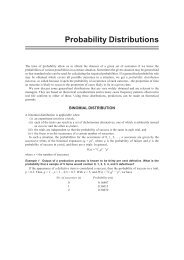International-Business-Dr-R-Chandran-E-book
International-Business-Dr-R-Chandran-E-book
International-Business-Dr-R-Chandran-E-book
You also want an ePaper? Increase the reach of your titles
YUMPU automatically turns print PDFs into web optimized ePapers that Google loves.
226<br />
<strong>International</strong> <strong>Business</strong>- <strong>Dr</strong>. R. <strong>Chandran</strong><br />
commodities and import those commodities that it produces at a higher<br />
comparative cost. The theory of comparative advantage is based on certain<br />
underlined assumptions given below:<br />
a) There should be two countries that produce the same two<br />
commodities.<br />
b) Labour is the only factor applied in production. It is assumed that the<br />
supply of labour is given and fixed. Also, the labour force is assumed<br />
to be homogeneous.<br />
c) Cost of labour, i.e, wages determine the price.<br />
d) Production is subject to the law of constant returns.<br />
e) There is no change in taste and preference of the people.<br />
f) No change in technology in expected.<br />
g) Factors of production are perfectly mobile within two countries but<br />
are not freely mobile between the countries.<br />
h) There is no transportation cost.<br />
i) There is full employment of factors in both the countries.<br />
j) There is homogeneity in consumption, buying behaviour and<br />
affordability.<br />
Based on the above assumption, Ricardo showed that two countries could<br />
indulge in trade even when one of them has an absolute advantage in<br />
production of one of the two commodities vis-à-vis the other country.<br />
Ricardo explained the theory of comparative advantage with the help of the<br />
example given below.<br />
Suppose the two countries viz. England and Portugal produce two<br />
different types of goods say wine and cloth, whose labour costs in terms of<br />
man hours required for unit of production are as follows:<br />
Country Wine Cloth<br />
England 120 100<br />
Portugal 80 90<br />
It is very clear from the table that Portugal has to expand less labour as<br />
compared to England in the production of both the commodities. Thus<br />
Portugal has an absolute cost advantage in both the goods while England has<br />
an absolute cost disadvantage in both of them. But Portugal would benefit by<br />
producing wine and exporting it to England in return for cloth as it has a<br />
comparative advantage in the production of wine. This is due to the fact that<br />
the relative cost of producing a unit of wine (80/120), is less than the relative<br />
cost of producing a unit of cloth (90/100). On the other hand, England has<br />
Only for Private Circulation





